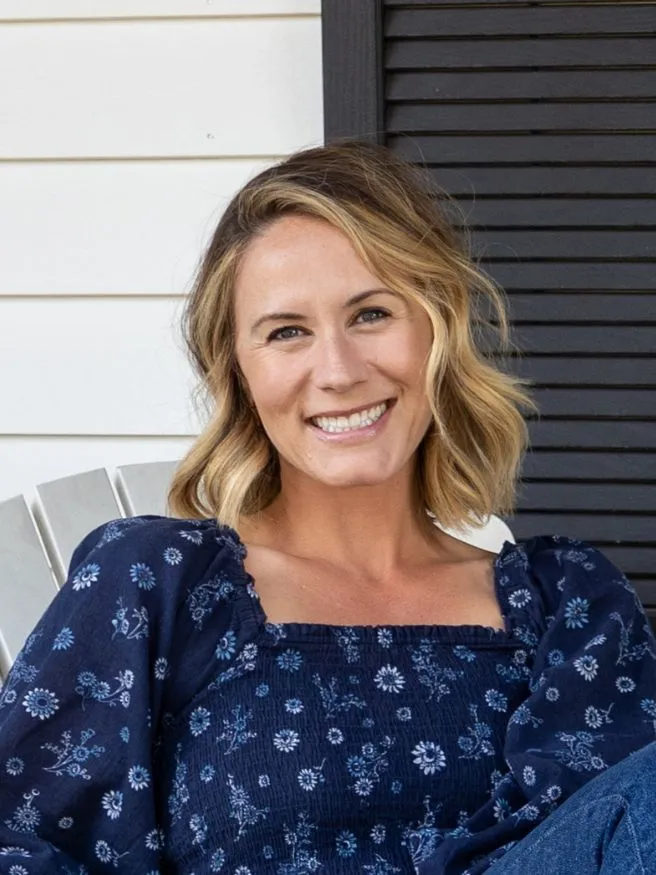Check out our extensive learning library today!
Check out our extensive learning library today!
Login below, or join now for instant access—just $1 the first month!
Select the code below and right click to ‘copy’
<a href="https://edrdpro.com/" target="_blank"><img decoding="async" class="skip-lazy" src="https://edrdpro.com/wp-content/uploads/2022/12/EDRD-Badge-Gold_White-1-1.png" alt="EDRD Pro Member Badge" border="0" /></a>
WEBSITE DESIGNER
Courtney is a multi-passionate entrepreneur in the weight-inclusive space. She’s an anti-diet dietitian and Certified Intuitive Eating Counselor with her own private practice, Vickery Wellness. She is also the CEO of Declet Designs, her website and branding studio for weight-inclusive businesses.
She has a double dose of knowledge, with bachelor’s degrees in political science and dietetics, plus a Master’s degree in Foods & Nutrition from the University of Georgia.
Her career journey includes working as a clinical dietitian, managing group fitness programs, community health initiatives, Corporate Health, and roles in healthcare administration. She’s even stepped in as the Interim Director of the Dietetic Internship at the University of Georgia.
At home, Courtney shares life with her husband of 15 years (they’ve been together since high school!), two awesome kids, a dog named Oliver, and two kitty cats, Finn and Callie.
Select the code below and right click to ‘copy’
<a href="https://edrdpro.com/" target="_blank"><img decoding="async" class="skip-lazy" style="margin: auto; width: 200px;" src="https://edrdpro.com/wp-content/uploads/2022/12/EDRD-Badge-Gold_White-1-1.png" alt="EDRD Pro Member Badge" border="0" /></a>Select the code below and right click to ‘copy’
<a href="https://edrdpro.com/" target="_blank"><img decoding="async" class="skip-lazy" style="margin: auto; width: 80px;" src="https://edrdpro.com/wp-content/uploads/2022/12/EDRD-Badge-Gold_White-1-1.png" alt="EDRD Pro Member Badge" border="0" /></a>
FOUNDER
Sumner is a mom to 2 amazing kids, an avid reader, and a dog-loving registered dietitian nutritionist (RDN) based outside of Portland, Oregon. She has been working in the eating disorder treatment space since 2009.
As the founder of EDRD Pro™️, Sumner’s professional focus is on bringing innovative eating disorder training to fellow dietitians and students through weight-inclusive and diversity-affirming models of care. By marrying her passion for helping people heal with her entrepreneurial drive, Sumner’s goal in building EDRD Pro is to ensure accessible, top-quality training is available to dietitians in the eating disorder space. She is also the co-author of How to Raise an Intuitive Eater: Raising the Next Generation with Food and Body Confidence.

Director of Education and Development
Angela is a Registered Dietitian Nutritionist based in Minneapolis, Minnesota. Find her tending to her wild vegetable gardens, biking with the kids, or snowshoeing in the parks during the colder months. She has been involved with learning, supporting, and educating here at EDRD Pro since 2020.
After covering a leave of absence for an RD in her internship, Angela has been working in the eating disorders space ever since. Angela founded Rooted Nutrition Services to provide accessible outpatient care for those with marginalized identities. She also is a peer mentor, supervisor, and consultant for those in the field. Angela co-founded, alongside Whitney Trotter, the BIPoC Eating Disorders Conference in 2022. The purpose of this annual conference is to create space for dynamic Black and Brown leaders to share their wealth of knowledge with colleagues in a space that is welcoming and honoring of their talents.

EDRDpro Marketing & Media Manager
MS, MPH (she/her) is a lover of books, podcasts, travel, yoga, lacrosse, Spanish, game nights, and long hikes! She earned her Bachelor of Arts summa cum laude in Latin American Studies and Public Health from Occidental College, Master of Science in Nutrition from the National University of Natural Medicine, and Master of Public Health in Health Promotion at the OHSU-PSU School of Public Health and holds certifications as an integrative health coach with Duke Integrative Medicine and as a Certified Intuitive Eating Counselor.
The non-diet and weight-inclusive philosophies underpin Greta’s work, as she guides clients toward discovering authentic health, peace, and freedom amidst a diet-and-weight-crazed world. She is the social media specialist for Evelyn Tribole (co-author of Intuitive Eating), a JV Women’s Lacrosse Coach at Jesuit High School, an adjunct faculty member at the National University of Natural Medicine, and the Marketing & Media Manager at EDRD Pro.

Director of Accounts and Outreach
Rachel has been an EDRD Pro team member as the Director of Accounts and Outreach since 2021. She is proud to be a member of a team that focuses on ethical eating disorder care with a passion to provide continuing education with intentional social and inclusive awareness.
In her spare time, you can almost always find Rachel cheering on her 2 amazing kids in their sporting events or volunteering at their schools. She also volunteers at local shelters and enjoys taking Pilates classes whenever she can fit them in. She believes in the continual pursuit of learning and growing and is passionate about helping others do the same. Her professional background is in account management where she has always enjoyed building relationships, engaging with clients and helping them maximize their value by means of consultations, feature adoption, and continued education.

Community Facilitator: Weight Inclusive Diabetes and Eating Disorders Consult Group
Erin (she/her) is a Registered Dietitian (RD) whose work is grounded in Health at Every Size and fat-positive nutrition. She has an advanced certification as a diabetes specialist (CDCES) and has spent most of her career working with people living with all types of diabetes.
Her passion is working with people with diabetes and eating disorders in her private practice as well as providing consultation to clinicians looking to be more grounded and confident in supporting their clients and patients with co-occurring diagnoses of diabetes and eating disorders.
She is an avid cat lover and wanna be dog parent, as well as a (very amateur but enthusiastic) rock climber, quilter and knitter.

Program Assistant
Kristen Nyampong serves as a Program Assistant at EDRD Pro and is a Registered Dietitian based in the DFW metroplex. As a Black woman with lived experience of an eating disorder, she is passionate about providing weight-inclusive care to BIPOC clients and values the education of weight-inclusive practices for nutrition counseling.
Outside of dietetics, Kristen enjoys attending concerts, traveling, and cooking. She loves sharing her culinary creations with friends and family, often through food photography. She’s always on a quest for the perfect dairy-free chocolate chip cookie.

Project Assistant
Katelynn is an eating disorder dietitian who is passionate about providing inclusive and compassionate care. Her areas of interest, training, and experience include cultural nutrition and food anthropology, social media, and adult and adolescent eating disorders.
Dietetics has not always been a place where Katelynn felt represented, and she aspires to help create spaces and supports for both patients and professionals to be seen. Training that is reflective of the diversity of patient identities and experiences in eating disorder recovery is difficult to come by, and it is an aspiration of Katelynn’s to change this narrative in the field.
Katelynn loves all things creative and spends her free time learning digital art, interior design, plant care, and experimenting with recipes. She’s a big believer in embracing the messy parts and getting comfortable with being bad at things as long as it’s fun!

EDUCATIONAL DEVELOPMENT
Amie is a dietitian and eating disorders specialist in Birmingham, Alabama. She has worked in the eating disorders field for more than a decade at various levels of care and has dedicated her career to increasing eating disorders awareness and advocating for weight inclusivity. She is the owner of Guice Nutrition Consulting, where she provides eating disorders education to current and future healthcare professionals through lectures, workshops, and training, as well as one-on-one mentoring and case consultation.